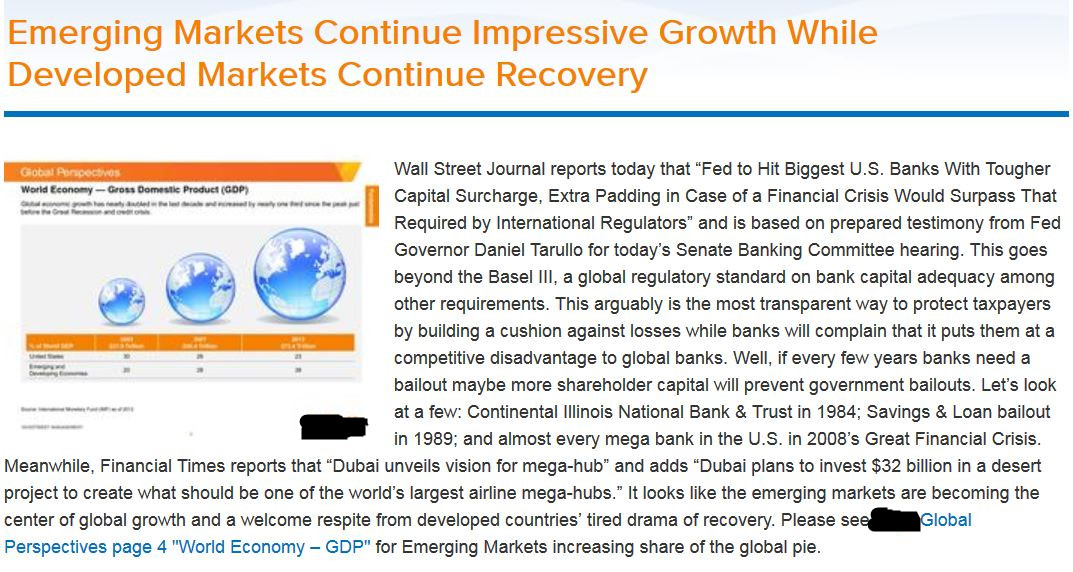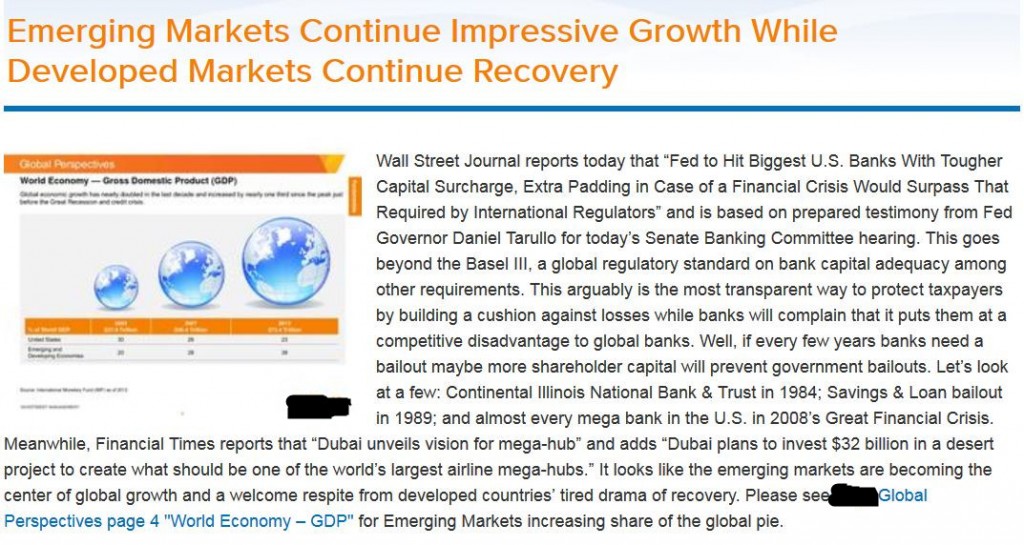Financial website writers, match headlines to content or lose readers
Your web pages should deliver on the promise made by your headlines. That doesn’t happen in the economic commentary example shown below (with company name blacked out).
Let’s look at what went wrong, so you can avoid these mistakes.
1. Most of the paragraph is unrelated to the headline
A Wall Street Journal report about bank surcharges has nothing to do with the headline topic of “Emerging Markets Continue Impressive Growth While Developed Markets Continue Recovery.” Emerging markets don’t enter the picture until the last two sentences of the paragraph.
2. Too-long paragraph lacks WIIFM and topic sentence
The paragraph is so long and dense that it’s likely to scare away all but the most motivated readers. Writing for the web demands that short chunks replace massive blocks of information. The content doesn’t explain its WIIFM—what’s in it for me. To catch busy readers’ attention, you need to make it clear why they’ll benefit from your content. For example, will you help them to understand why emerging markets’ growth will outpace that of developed markets, making them an important component of a diversified portfolio? The example in the image above fails the WIIFM test.
The paragraph also lacks a strong topic sentence that introduces its overall topic. To me, it reads as if a person saw an interesting article in The Wall Street Journal and spouted reactions off the top of his or her head, and then moved on to a Financial Times article and, finally, a thought about the emerging markets.
3. The graph isn’t supported by the text
The “World Economy — Gross Domestic Product (GDP)” graph in the web page’s image doesn’t relate to the accompanying text. A good writer would have related the headline and the graph in his or her text, instead of rambling about banking.
How to fix this page?
Fixing this page would require one of two approaches. First, throw out all of the text, except possibly a revised version of the last two sentences, and create new content focused on the growth of emerging vs. developed markets, as shown by the graph, other data in the clickable link, and other evidence.
The second approach would require throwing out the current headline and graph to focus on the implications of the Fed’s capital surcharge. The banking text would need a drastic rewrite to become more focused and less flabby.







